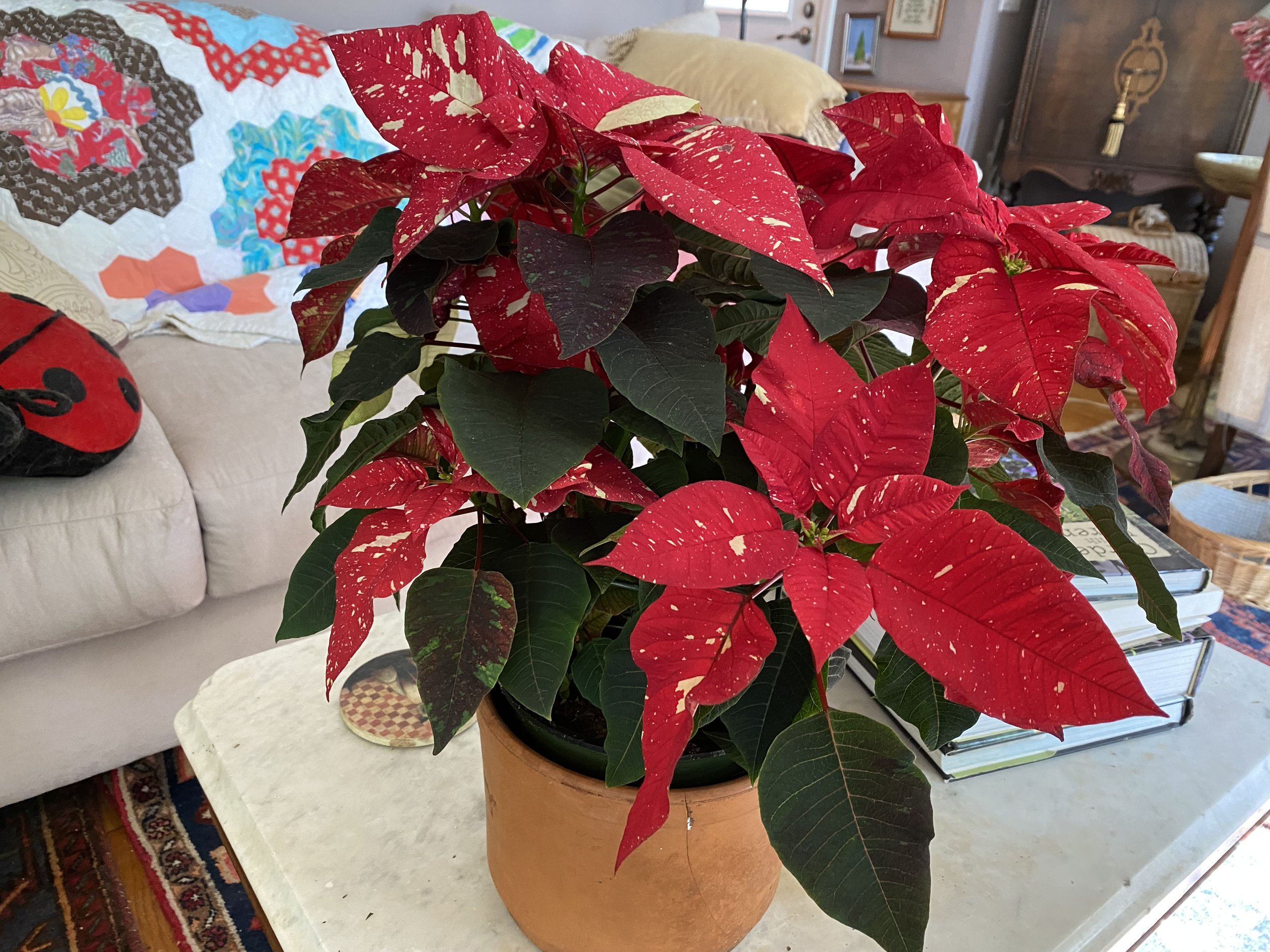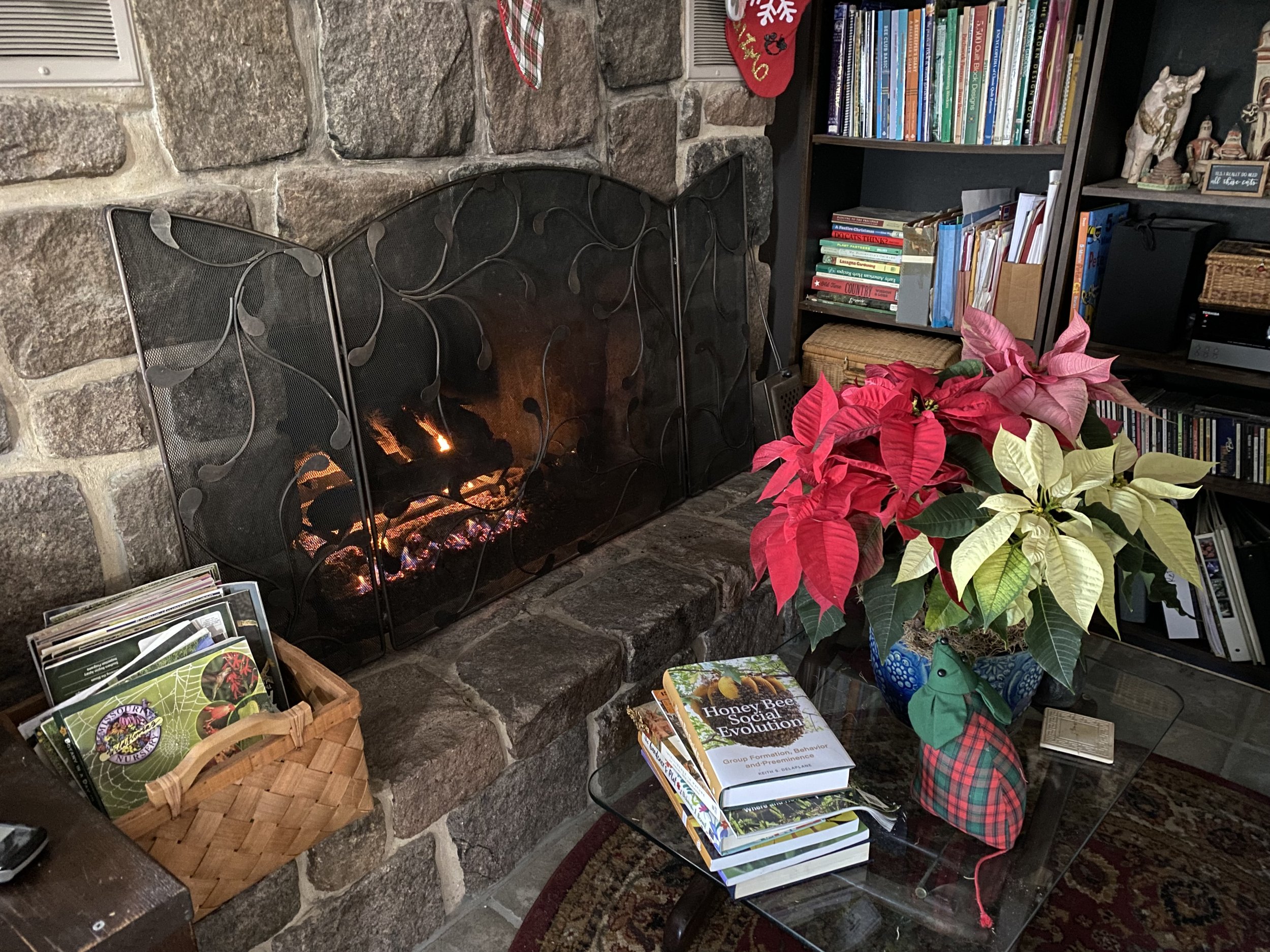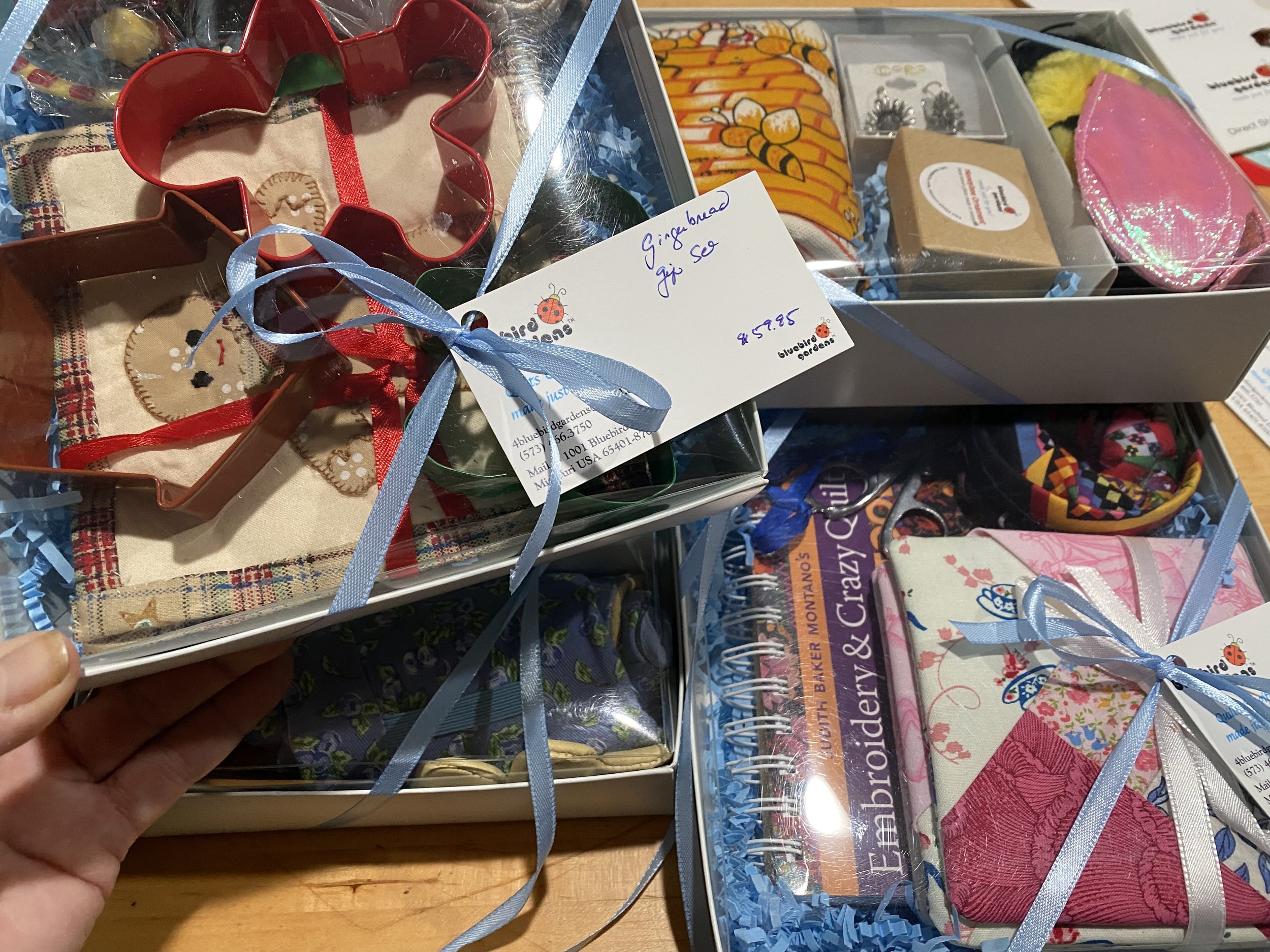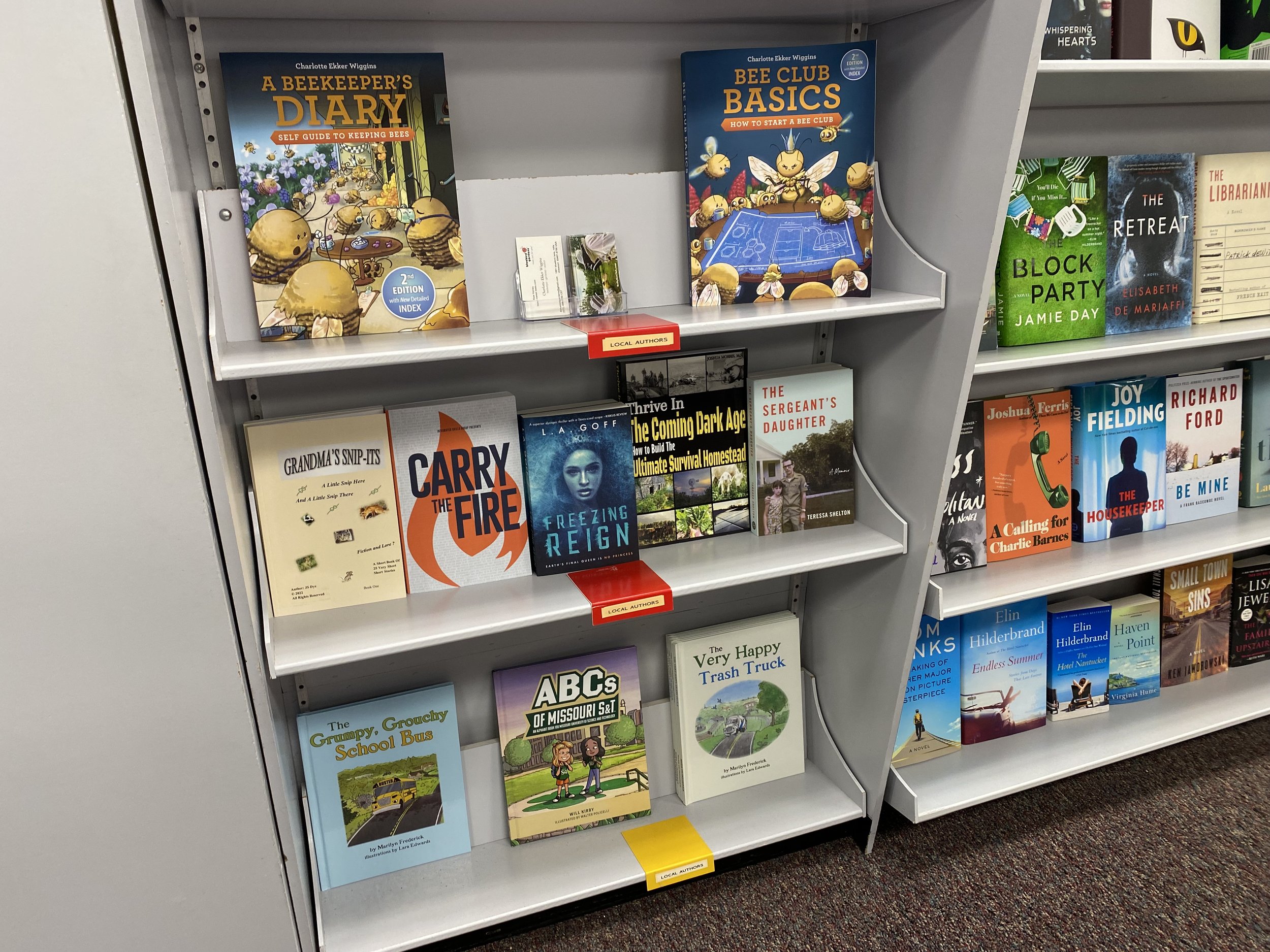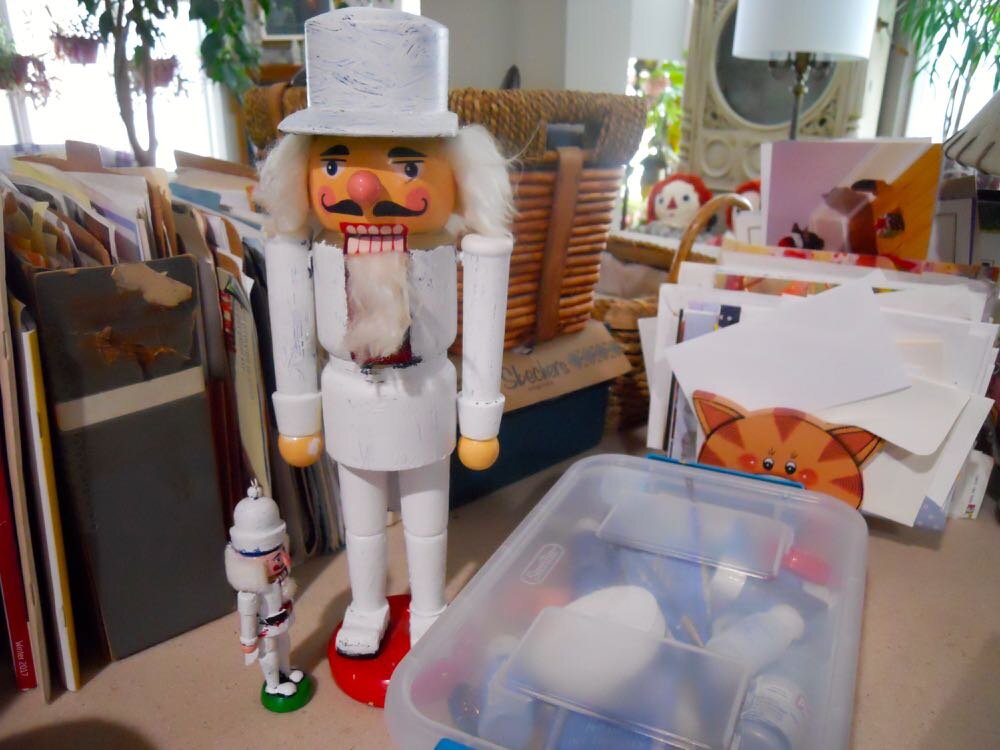Caring for Poinsettias
/candy cane poinsettia is one of about 100 poinsettia hybrids now available. (charlotte ekker wiggins photo)
Caring for Poinsettias
My first recollections of poinsettias are from early days living in Mexico City. We had several poinsettia trees growing in our backyard, the equivalent of flowering dogwoods and eastern redwood trees growing today in Missouri. These lovely tropical plants have become a holiday decorating staple in the US, easily bringing the holidays into any spot where they sit.
I also love poinsettias because their color in their leaves lasts a long time. Last year, two poinsettias finally turned all green in June. That’s when I took them outside to spend the summer in shade so they could bloom again.
Here are ten essential tips for caring for your poinsettias:
1. Transport Them Safely
Poinsettias are sensitive to temperature changes, and drafts can damage them quickly. One of our local big box stores was giving out refunds earlier this week because their poinsettias were shipped in the refrigerated truck section. By the time a customer took one home it was dead.
How to do it: When buying a poinsettia, ensure it's wrapped in protective paper or plastic by the store. Don’t count on that clear crinkly paper being enough, add a plastic or paper bag over it and keep the roots warm. Try to get it home quickly and avoid leaving it in a cold car for extended periods.
2. Place in the Right Spot.
Poinsettias need specific light conditions to stay healthy.
How to do it: Place your poinsettia in a spot with bright, indirect light. Direct sunlight can scorch the leaves, and too little light will cause it to drop leaves prematurely. Don’t place it on top of a TV or anything that generates heat. A spot near a window with sheer curtains is ideal.
3. Maintain a Moderate Temperature
Extreme temperatures can cause stress and damage the plant.
How to do it: Poinsettias prefer temperatures between 65°F and 75°F (18°C–24°C). Avoid placing them near drafts, heat vents, or fireplaces, as fluctuating temperatures can lead to leaf drop and poor growth.
4. Watering with Care
Overwatering or under-watering can quickly harm a poinsettia.
How to do it: Remove that shiny krinkly decorative paper that protects the pot and place the pot in a basket or ceramic container with a saucer.
Most poinsettias get killed from too much watering love. Water the poinsettia when the top inch of soil feels dry to the touch. Ensure the pot has good drainage and never allow the plant to sit in water. Empty any excess water from the saucer after watering. Avoid letting the plant dry out completely or keeping it too wet, as both conditions can cause stress.
5. Fertilize Lightly
Poinsettias need a bit of nutrition to thrive, but too much fertilizer can harm them.
How to do it: During the growing season (spring through summer), fertilize with a balanced, water-soluble fertilizer every 4-6 weeks. Avoid fertilizing during the bloom period (fall and winter) to prevent encouraging too much leafy growth at the expense of the colorful bracts.
6. Humidity Is Key
Poinsettias are native to tropical climates and appreciate humidity.
How to do it: Keep the humidity around your poinsettia moderate. If your home is dry, especially in winter with indoor heating, place the plant on a humidity tray (a shallow tray filled with water and pebbles) or use a room humidifier. Just be sure the plant isn’t sitting in standing water.
7. Deadheading and Pruning
Regular maintenance helps keep your poinsettia looking tidy and healthy.
How to do it: After the blooms (the colorful bracts) fade, you can prune back the stems to about 4 inches to encourage new growth. Trim off any yellowing or dead leaves. If you plan to keep the poinsettia beyond the holiday season, regular pruning will help maintain its shape.
And contrary to popular belief, poinsettias are not toxic to cats or other pets. Keep any curious visitors away from the plants just on principle.
8. Extend the Blooms (Light Control for Re-blooming)
If you want your poinsettia to bloom again the following year, light control is crucial.
How to do it: Poinsettias require 12-14 hours of complete darkness each night to trigger blooming. Starting around late September or early October, place the plant in total darkness (such as a closet or box) each night for about 8 weeks. During the day, ensure it gets plenty of bright, indirect light. After this period, the bracts should begin to show color.
9. Avoid Overcrowding
Crowding or placing poinsettias near other plants can lead to fungal or pest issues.
How to do it: Keep your poinsettia a few inches away from other plants to allow for air circulation. This will help reduce the risk of pests like aphids and mealybugs, and it’ll keep the leaves dry to prevent mildew or mold.
10. Post-Holiday Care (Reblooming or Disposal)
Poinsettias can live long past the holiday season if given the right care.
How to do it: After the holidays, you can either continue caring for the poinsettia and try to get it to rebloom (as mentioned above) or dispose of it. If you decide to keep it, prune back the plant and continue providing light, water, and moderate temperatures. If you don’t want to keep it, consider composting it rather than just tossing it in the trash.
For more gardening, beekeeping, cooking and easy home decor tips, subscribe to Garden Notes.
Charlotte

